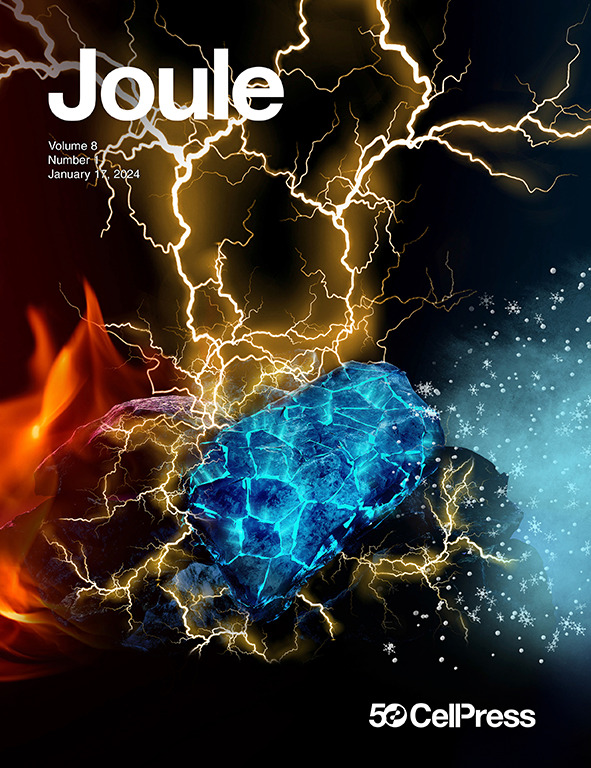Enhancing water and oxygen transport through electrode engineering for AEM water electrolyzers
IF 35.4
1区 材料科学
Q1 CHEMISTRY, PHYSICAL
引用次数: 0
Abstract
Anion-exchange membrane water electrolyzers (AEMWEs) can accelerate the deployment of more efficient and affordable hydrogen production solutions. Here, electrode structure is shown to affect water back-diffusion and oxygen transport, which, in return, governs overpotential behaviors in AEMWEs. Measurements indicate that electrode with copious catalytic sites produces water close to the AEM, creating a higher water gradient and driving water back-diffusion, which improves membrane hydration and mass transport. In situ measurement reveals a high pH gradient near the anode surface, which affects anode kinetics. Operando measurement shows reduced oxygen accumulation when decoupling oxygen production and transport on anode. Catalyst ink rheology and stability are tuned with additives to realize scalable fabrication of electrodes with enhanced transport features, allowing AEMWE to operate at 2 A cm−2 for over 1,000+ h at a 2.3 μV h−1 degradation rate. Analysis during and post-durability provides insights into degradation mechanisms. This work demonstrates an electrode design strategy for efficient and durable AEMWEs.


通过电极工程提高AEM水电解槽的水氧输送
阴离子交换膜水电解槽(AEMWEs)可以加速部署更高效、更经济的制氢解决方案。在这里,电极结构被证明影响水反扩散和氧输运,这反过来又控制了AEMWEs中的过电位行为。测量结果表明,具有丰富催化位点的电极产生靠近AEM的水,产生更高的水梯度并驱动水反扩散,从而改善膜的水合作用和质量运输。原位测量显示阳极表面附近有一个高pH梯度,这影响了阳极动力学。Operando测量表明,当阳极上的氧产生和输运去耦时,氧积累减少。催化剂油墨流变性和稳定性通过添加剂进行调整,以实现具有增强传输特性的电极的可扩展制造,允许AEMWE在2.3 μV h−1的降解率下在2 A cm−2下工作超过1,000+ h。耐久性期间和耐久性后的分析提供了对降解机制的深入了解。这项工作展示了一种高效耐用的AEMWEs电极设计策略。
本文章由计算机程序翻译,如有差异,请以英文原文为准。
求助全文
约1分钟内获得全文
求助全文
来源期刊

Joule
Energy-General Energy
CiteScore
53.10
自引率
2.00%
发文量
198
期刊介绍:
Joule is a sister journal to Cell that focuses on research, analysis, and ideas related to sustainable energy. It aims to address the global challenge of the need for more sustainable energy solutions. Joule is a forward-looking journal that bridges disciplines and scales of energy research. It connects researchers and analysts working on scientific, technical, economic, policy, and social challenges related to sustainable energy. The journal covers a wide range of energy research, from fundamental laboratory studies on energy conversion and storage to global-level analysis. Joule aims to highlight and amplify the implications, challenges, and opportunities of novel energy research for different groups in the field.
 求助内容:
求助内容: 应助结果提醒方式:
应助结果提醒方式:


